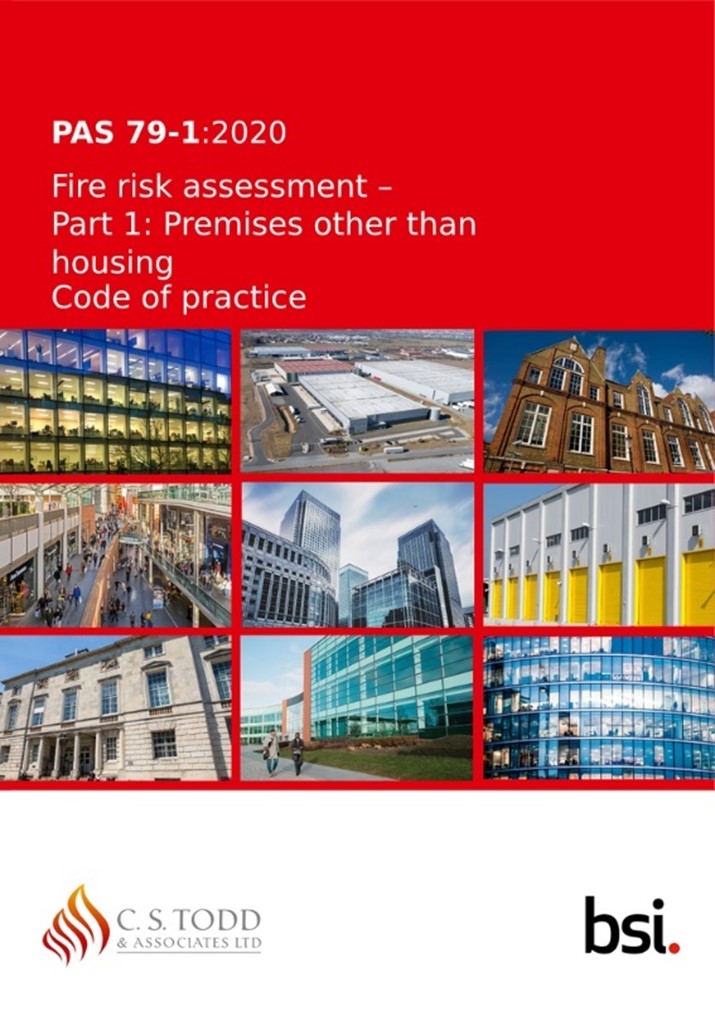
In December 2020, the British Standards Institution (BSI) published a revision of the PAS 79 Fire Risk Assessment guidance. This document was last reviewed in 2012 and had previously provided generic fire risk assessment guidance covering both domestic and non-domestic premises.
The housing sector however were eager to have more housing-specific recommendations so therefore BSI have now updated the existing PAS and renamed it PAS 79-1:2020, and introduced a new housing specific document, PAS 79-2:2020.
PAS 79-1:2020 will provide recommendations on how to conduct fire risk assessments that will protect the occupants of non-domestic premises for example, contractors, visitors and employees.
PAS 79-1:2020 will be aimed at fire safety professionals with knowledge of the principles of fire safety and who have responsibilities for a particular organisations fire safety or work for consultancies in providing fire risk assessments as a service.
BSI have outlined what there is to expect with the new code of practice:
- PAS 79-1 is elevated in status from ‘guide’ to ‘code of practice’ providing higher standing in the hierarchy of legislation. PAS 79:2012 was already written in the form of a code of practice – the change in status is simply to recognize this, noting that guides are not usually of such a nature as to sustain a reliable claim of compliance.
- The scope now excludes blocks of flats, sheltered housing, extra care housing, supported housing and certain houses in multiple occupation (i.e. those falling within the scope of the relevant fire safety legislation), all of which are now covered in PAS 79-2:2020
- The technical content has been subject to amendment in the light of experience in the use of PAS 79
- There is new guidance on the consideration to be given to external wall construction and cladding
- There is recognition of pre-occupation fire safety assessments, a term now defined in this PAS, and a clarification to avoid confusion between these assessments and the fire risk assessment to which this PAS refers
- There is even greater emphasis on the competency of fire risk assessors and reference to future competence standards. It’s also noted that fire safety specialists with experience only in the design of new buildings might not possess an appreciation of standards against which older buildings were designed and the possible continued acceptability of such standards.
- Changes to, and publication of various new, British Standards have been taken into account.
The housing specific document, PAS 79-2:2020, provides recommendations and examples of documentation for undertaking, and recording the significant findings of, fire risk assessments in housing premises and parts of housing premises for which fire risk assessments are required by legislation. BSI have provided an outline of the changes introduced to housing specific standard. A few of these include:
- PAS 79-2 is a code of practice, whereas PAS 79:2012 was a guide.
- The scope of this new Part 2 of PAS 79 comprises blocks of flats, sheltered housing, extra care housing, supported housing and certain houses in multiple occupation (i.e. those falling within the scope of the relevant fire safety legislation). Fire risk assessment for other, non-housing premises is now addressed in a new Part 1 of PAS 79
- There is new guidance on the consideration to be given to external wall construction and cladding
- There is recognition of pre-occupation fire safety assessments, a term now defined in this PAS, and a clarification to avoid confusion between these assessments and the fire risk assessment to which this PAS refers
There is no direct equivalent to PAS 79 in the Republic of Ireland, and as such, while it is a UK created document, it does provides a great basis to use to approach fire risk assessment in a structured and consistent way.
Further information on the above BSI standards is available here:
If you would like any further information on fire risk assessment or our other fire safety engineering services you can chat to us instantly by clicking the chat box in the bottom right-hand corner of your screen. Alternatively, you can click here to email us.
